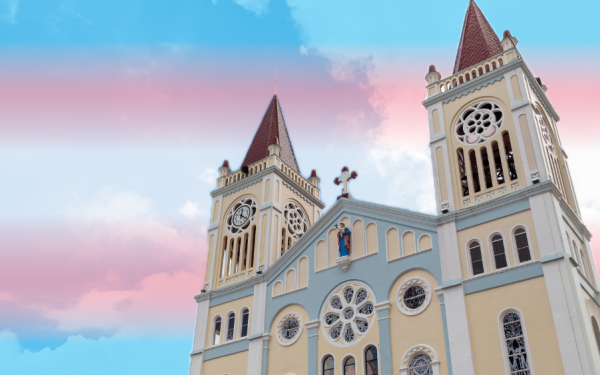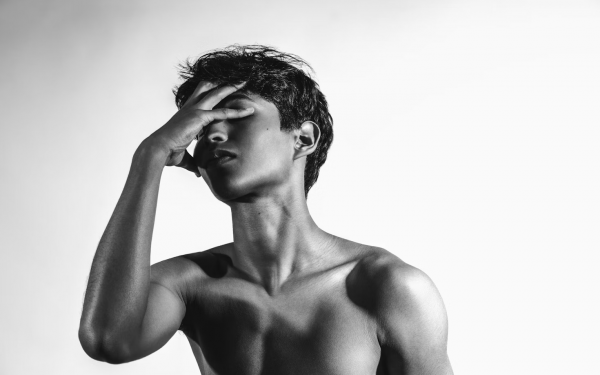A Safe Space in the Church Basement
West Island Youth Centre Gives LGBTQ Youth a Community
Since she was eight or nine years old, Jessica Malz felt she was unlike any other girl she knew.
While her friends chased boys around the schoolyard at recess, she remembers usually running after the girls.
“I knew something was different,” she said. “But I didn’t have the words for it. I was just always more interested in my friends who were girls.”
As far as she knew, she was the only person at her school, and in all of the West Island suburb of Dollard-des-Ormeaux, who was attracted to people of the same sex. For most of her high school years, she recalls feeling unhappy and intensely confused about her identity.
Now the coordinator of the LGBTQ Youth Centre in Beaconsfield, QC, the only centre of its kind in the West Island, Malz is helping many queer and “questioning” teens become comfortable with who they are.
Two years old this May, the centre usually attracts a dozen young people between the ages of 14 and 21 each week, with higher attendance in the summer. Housed in the well-lit basement of the Beaconsfield United Church, the centre has a small library of books and movies, a big-screen TV, and a foosball table.
A chain of rainbow flags hang from the entrance, and drawings made by the kids decorate the walls. In addition to weekly drop-in hours and discussion groups, Malz and volunteers at the centre hold meetings for parents of lesbian, gay, bisexual, transsexual and queer kids, many of whom are concerned about how to make their home a more welcoming environment for their child.
Since the centre opened its doors in May 2011, young people between the ages of 14 and 21 have shown up every week for advice and to share their experiences with others like themselves.
The centre organizes movie screenings, dinners, and trips to Pride events in the summer.
Like Malz herself when she was a teenager, many of the adolescents who use the centre are unsure about their identity.
“Some of them are confused about whether what they’re going through is gender- or sexual orientation-related,” she said. “Others are struggling with normal teen issues like sex, drugs, self-acceptance, figuring out what they want to take in CEGEP—a lot of normal coming-of-age stuff.”
Malz says she takes a hands-off approach to helping teens at the centre, drawing heavily on personal experience.
“I never tell them what to do,” she said. “I listen and make them feel understood and that they’re not alone. And then I use the resources that we have—and the best resource we have is other teens that have gone through the process themselves.”
Although high school is still a very difficult place for LGBTQ teens, Malz says it’s generally easier for teenagers to come out now than it was when she was their age, due to the spread of student-led Gay-Straight Alliances and wider accessibility to counselling services in schools.
Most of the adolescents at the centre have already come out to their friends and family, but a few of them still come to drop-in hours in secret, Malz said.
“Sometimes I Don’t Feel Exactly Like the Perfect Girl”
Sarah, 17, started going to the centre last year with questions about her sexual identity (she asked to be mentioned by her first name only, even though she has come out to her friends and family). She generally eschews labeling herself, but will say that she identifies as queer.
Asked why she prefers this term to lesbian, she said, “It has a lot to do with my way of thinking in the world and how I feel about my very ambiguous gender identity. Sometimes I don’t feel exactly like the perfect girl, which is why queer is better than lesbian.”
Before identifying as queer, Sarah thought she might have been bisexual. When she came out as bi to her peers at school, one of her friends replied, “You can’t be bi. You’re either gay or straight. There’s no in-between.”
Sarah’s parents, who she described as being very open-minded, were much more accepting.
“Even before I told them, they were very supportive, saying that, ‘If you ever figure [this] out later on life we will still love you and care about you,’” she said.
Now in her last year of high school, Sarah is hoping to enter the three-year social service program at Dawson College as preparation for a career in foster care.
A Safe Place
Malz’s first priority when she greets newcomers to the centre during drop-in hours is to make them feel safe.
Typically, Malz introduces anyone new to the regulars at the centre and suggests some topics for discussion. Although the teens spend most of their time at the centre talking in a group, they can also ask for a one-on-one appointment with Malz or a volunteer counsellor.
Asked what she often tells the kids in these sessions, Malz said, “I just try and tell them that they’re free to explore and figure it out and they don’t need to label themselves or prove anything to anybody.”
When she was growing up, Malz says she didn’t have anywhere to turn to for support.
“When I was a teenager, I didn’t know anyone who was gay. I had nobody to talk to, and felt very isolated, and very scared. I didn’t know anyone in my community, I didn’t know anyone at school—and at the time, high school was not a safe place to come out in,” she said.
“For many years, I didn’t even have the words to express what I was going through.”
When she found out about the opening of the LGBTQ Youth Centre, she felt a need to apply as a volunteer. After the former coordinator of the centre moved to the United States last year, Malz was offered the job.
“It’s been very meaningful for me to able to support these kids and watch them come out and have a safe place to come to,” she said.
After getting to know some of the teens at the centre so intimately, Malz says it is often hard to see them move on.
“It’s bittersweet, because I saw them come a long way in terms of just accepting themselves and getting happy and becoming a part of their community.”

(WEB)_482_282_90.jpg)
_600_832_s.png)

_600_375_90_s_c1.jpg)
_600_375_s_c1.png)

